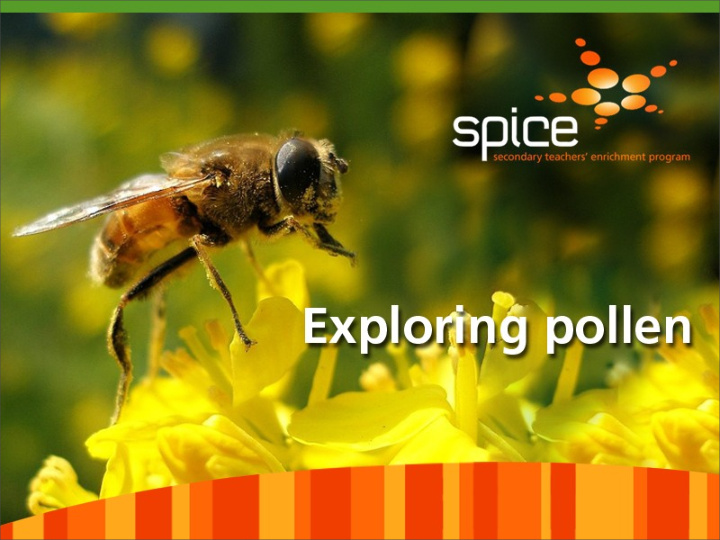



There are thousands of species of flowering plants (Angiosperms) …
… with a range of flower types.
Flowers contain male and female parts, and each feature has a unique function.
Pollen forms in the male part of a flower, the anther.
Pollen is transferred from the anther (male part) to the stigma (female part) in a process called pollination.
Many plants, including most grass species, rely on wind for pollen dispersal.
Some plants, such as seagrasses, use water to disperse pollen.
For other plants, pollination involves complex relationships with living organisms: animals such as bats, insects and birds.
The honey possum is an animal vector in the distribution of pollen from plants in southwest Western Australia.
Some humans have a reaction to pollen, causing hay fever, although hay is rarely the cause.
Pollen grains have diverse appearances.
pollen size 23 µ m Pollen grains occur in many Banksia littoralis sizes. Pollen from ‘ forget-me-not ’ flowers is amongst the smallest, at 6 µ m diameter, while birch tree pollen is amongst the largest at 100 µ m. 1 mm = 1000 µ m 55 µ m Grevillea Robyn Gordon
pollen shape ovoid Pollen comes in a variety of shapes: ovoid, spherical and spherical triangular are the most common. triangular
pollen STRUCTURE The outer wall (exine) of a pollen grain is tough, to protect it from the environment.
pollen OPENINGS Pollen grains may have openings (apertures) that allow for transfer of male gametes. Circular openings are called Elongated openings are called pores. colpi.
pollen surface texture psilate rugulate reticulate (smooth) (irregular patterns) (net-like) verrucate striate (surface bumps) (roughly parallel edges)
The unique features of pollen are best viewed through a microscope. To avoid contamination, attention to detail is required when making slides to view under a microscope. The type of microscope used depends on the image detail required.
ocular lens usually with magnifications of 10x and 15x objective lens usually with magnifications of 4x, 10x and 40x OCULAR LENS OCULAR LENS TOTAL MAGN TOTAL MAGN GNIFICATION GNIFICATION 10x 15x 4x 40x 60x OBJECTIVE 10x 100x 150x LENS LENS 40x 400x 600x
At larger magnifications, less of the object can be seen, but more detail is visible. Banksia littoralis 200x magnification Banksia littoralis 1000x magnification
Electron microscopy • uses electrons instead of light, • provides higher magnifications (up to 2 million times), • provides much higher resolutions, and • requires special treatment of samples.
Scientific study of pollen has many applications. For example, it is useful in ecology, where it can help identify an animal ’ s diet. A honey possum eats nectar, and gets pollen on its nose when feeding. By examining this pollen, it is possible to identify flowers visited by honey possums.
Recommend
More recommend